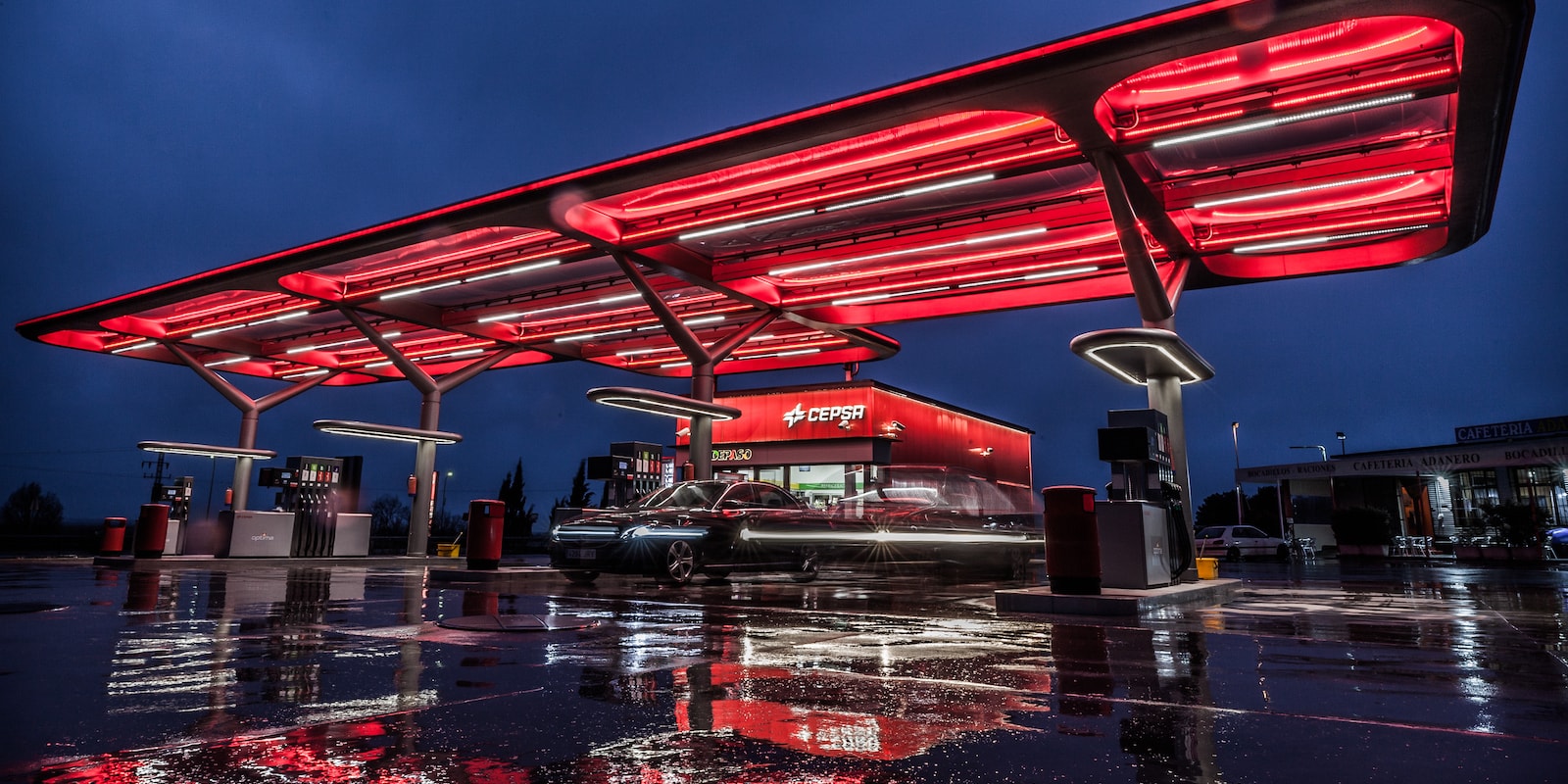Thursday, January 26, 2023
Spaces usually used for refueling and rest must now adapt to a new world that needs more services and an improved user experience that promotes efficiency and sustainability.
By Pablo Suarez
After several decades raising awareness and preparing for change, decarbonization is here. The process to which mankind has entrusted much of its hopes for saving the planet is a growing reality in a world that is trying to readapt to new circumstances. Reducing fossil fuels in the current economic and productive structure requires a process that also involves rethinking many other aspects, from lifestyles to infrastructure.
The future is now here. It has come together with the implementation of a new energy model and the advances that, in parallel with this change, continue to be made. It's a future with hints of the present where mobility will be one of the main sectors to undergo changes. New paradigms for new needs.
In the list of infrastructure to be refurbished and provided with new utilities, spaces such as service stations occupy the top positions. Located at strategic locations throughout the road network, these sites provide a break in the road for millions of drivers. With the advent of new transportation and the development of the concept of efficiency, service stations are facing an optimization process that will enable them to respond to new needs and adjust their range of services to the demands of the future.
Digitized, connected, and automated: the gas stations of the future
Digitalization plays a key role in this process. In addition to being enabled as a refueling point for new forms of mobility such as electric or hydrogen vehicles, these spaces must take a turn towards modernity to make them up-to-date and functional places. From payment integration via virtual platforms to developing applications based on artificial intelligence that can facilitate their use.
According to the report Energy Journal by US consulting firm Oliver Wyman, the next decade will be critical for the transformation of the gas station-customer-automobile relationship towards a model in which digitalization, connected vehicles, the development of apps, the sharing economy will play a leading role. Alejandro Gaffner, Oliver Wyman partner in Spain and expert in the transport and energy sector, argues that "the digital transformation of service stations is imminent and its effects will change the economic model of the sector," adding that "in the coming years, operators who anticipate the change will have a significant competitive advantage." New unknowns are on the horizon for what will be the new service station paradigm of the future: Will you need to get out of the vehicle to refuel? What about cashiers? Will all types of vehicles be accommodated, from electric and hybrid, hydrogen and gas to autonomous and shared? Along these lines, the report The Future of Fueling. Trend Report by Dover Fueling Solutions, shows that these futuristic-sounding concepts could become reality through dedicated fueling lanes that offer contactless digital experiences.

Furthermore, the Oliver Wyman report predicts that by 2035, the peak time for activity at a gas station will be 2 a.m., when autonomous vehicles will independently go to refuel so that drivers will find their tanks full for the next day. Refueling could even be ordered, and customers could request that their fuel be delivered to their home or office parking lot.
Super service stations:
If a service station was once a place to fill up the tank and have a coffee, the stations of the future must represent the possibility of charging an electric car at the same time as you deliver or pick up an order or do the day's shopping. A range of possibilities at the service of sustainability and energy efficiency. In fact, regarding energy savings at service stations, it is worth mentioning the project that Cepsa has underway together with Redexis to create the first global network of photovoltaic energy in service stations in Europe. This projects plans to install over 40,000 high-tech photovoltaic panels with a production objective of more than 32,800 MWh per year, equivalent to the annual energy consumption of 11,000 homes. Another important agreement was signed with Endesa to create the largest high power electric charging point ecosystem in the Iberian Peninsula, which aims to install between 1,200 and 1,500 high power charging points by 2024 and up to 8,600 by 2030 between Spain and Portugal.
You do not need to take refuge in your imagination to create images of these "superstations." The trend has taken root strongly in Europe, with Germany and Ireland among the countries where its implementation has gone most smoothly. In Germany, for example, some service stations have agreements with DHL to have packstations. Another successful initiative that only reasserts the way forward is that more and more service stations are joining the Too Good to Go app network to reduce food waste.
In Spain, Cepsa is one of the companies leading the transition towards the conversion of the traditional service station to digitized spaces offering multi-mobility, ultra-convenience, and catering services. What does this translate to? Into the application of 5G technology to optimize the performance of its stations, the integration of these spaces with e-commerceand home delivery, or a fresh produce and catering selection. Also into a range of solutions for transportation, as shown by the pilot project resulting from the agreement with Silence, a subsidiary of the Acciona Group, to develop a network of battery exchangers at Cepsa service stations. Or in the innovative, digital, and more sustainable car wash, which has the option of automatic payment and subscription models, in addition to using around 80% recycled water, soaps, and other washing products with less environmental impact and clean electricity from solar energy, according to the company. All these solutions make these spaces authentic 'hubs' of ultra-convenience fit for the present.
These are just a few examples that demonstrate an unquestionable reality: that digitalization is a lever for change when it comes to promoting an efficient and sustainable trend. Both commitments are closely linked to improving people's lives and the health of the planet. With the future at our doorstep, renewing and adapting to the new environment is not only a way to improve a company's economic performance, but also to change the world.
¿Te ha parecido interesante?





